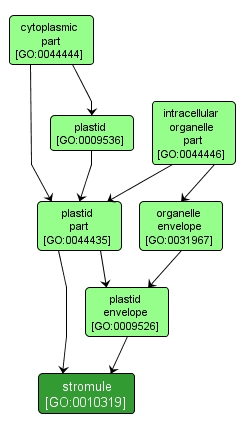| Desc: |
Thin filamentous structure extending from the surface of all plastid types examined so far, including chloroplast, proplastid, etioplast, leucoplast, amyloplast, and chromoplast. In general, stromules are more abundant in tissues containing non-green plastids, and in cells containing smaller plastids. The primary function of stromules is still unresolved, although the presence of stromules markedly increases the plastid surface area, potentially increasing transport to and from the cytosol. Other functions of stromules, such as transfer of macromolecules between plastids and starch granule formation in cereal endosperm, may be restricted to particular tissues and cell types. |














